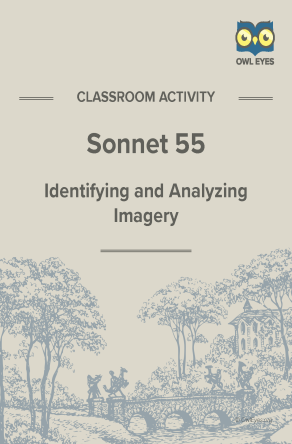Sonnet 55 Imagery Activity
- 8 pages
- Subject: Imagery, Literary Devices, Tone, Lesson Plans and Educational Resources
- Common Core Standards: RL.11-12.1, RL.11-12.4, RL.11-12.5, RL.9-10.1, RL.9-10.4
Product Description
In Sonnet 55, William Shakespeare takes up three of his essential themes: love, death, and poetry. Swelling with confidence in his poetic abilities, Shakespeare’s speaker puts his love poetry up against the destructive forces of time, claiming that his beloved will live on “in the eyes of all posterity.” Shakespeare’s imagery makes vivid the effects of time, showing us overturned status and “war’s quick fire.”
Skills: analysis, drawing inferences from text, close reading, identifying the relationship between words
About This Document
The Owl Eyes Imagery activity gives students an opportunity to practice identifying and analyzing imagery. Imagery within a text creates a sensory experience that can connect readers to a text’s setting, atmosphere, or overall aesthetic. Studying imagery will help students understand how narrators or principal characters feel. The main components of this worksheet include the following:
- A brief introduction to the text
- A handout on types of imagery with examples from classic texts
- A step-by-step guide to activity procedure
- Selected examples of imagery from the text
In completing this worksheet, students will learn to identify and analyze different kinds of imagery in order to develop close reading skills and identify the effect imagery has on their reading experience.







